You need to convert your data from wide to long and then use ggplot. Look below;
library(tidyverse)
dt %>%
pivot_longer(., -Team, values_to = "W", names_to = "Year") %>%
mutate(Year = as.integer(gsub("W", "20", Year))) %>%
ggplot(., aes(x=Year, y=W, group=Team)) +
geom_line(aes(color=Team))

Data:
dt <- structure(list(Team = c("AC", "AF", "AK", "AL", "AA&M", "Alst", "Alb"),
W15 = c(7L, 12L, 20L, 18L, 8L, 17L, 24L),
W16 = c(9L, 12L, 25L, 18L, 10L, 12L, 23L),
W17 = c(13L, 12L, 27L, 19L, 2L, 8L, 21L),
W18 = c(16L, 12L, 14L, 20L, 3L, 8L, 22L),
W19 = c(27L, 14L, 17L, 18L, 5L, 12L, 12L)),
class = "data.frame", row.names = c(NA, -7L))
# Team W15 W16 W17 W18 W19
# 1 AC 7 9 13 16 27
# 2 AF 12 12 12 12 14
# 3 AK 20 25 27 14 17
# 4 AL 18 18 19 20 18
# 5 AA&M 8 10 2 3 5
# 6 Alst 17 12 8 8 12
# 7 Alb 24 23 21 22 12

